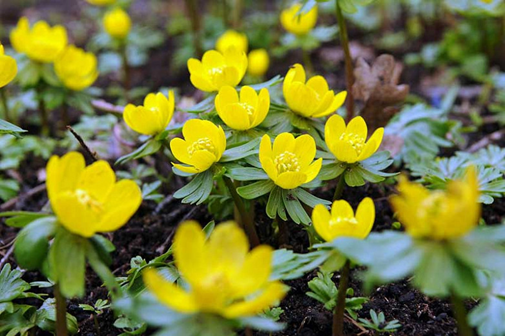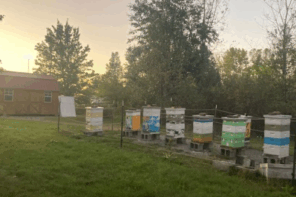Alyssum Flowers
Now is the time to plan and plant Spring flowering bulbs for color next year. Many species, colors and varieties are available and many provide much needed nectar and/or pollen for honey bees and other pollinators. Dreary, wet Spring days can last for several months, yet honey bees and native bees require lots of food to feed their progeny.
Any day that provides some sunshine and is over 42°F will entice bees to search for food resources near their “nest,” so that they don’t expend a lot of energy to fly and can get back quickly before the cooler temperatures thwart their efforts. Insects obtain energy from the sun and warm temperatures, so quick trips for food are critical before cold temperatures slow their energy and prevent them from returning safely. For this reason, it is best to plant patches of Spring bulbs around the yard instead of planting single bulbs. It is also much more pleasing to see.
The most protein packed bulbs are Crocus (Crocus spp.) Allium spp. (many!), Winter aconite (Eranthis hyemalis), Snowdrops (Galanthus spp.), Glory-of-the-snow (Chionodoxa spp.), Leucojum vernum (no common name-Amaryllis Family), Siberian squill (Scilla siberica), Scilia tubergeniana (no common name), Hyacinth spp. (common hyacinth), Spanish bluebell (Wood hyacinth)- Hyacinthoides hispanica), Grape hyacinth (Muscari spp.), Star of Bethlehem (Ornithogalum umbellatum) and tulips. All contain medium to high levels of nectar.
Other desirable bulbs that have some protein and nectar are Winter anenome, Dutch Iris, (also called Reticulated iris, Winter buttercup (Eranthis spp.), Fritillaria (also called Crown Imperial, Fritillaria meleagris) lilies and daffodil species.
Many of these will naturally spread and cover banks, rock gardens and sunny slopes (be careful of Star of Bethlehem as it spreads rapidly and is often considered to be a weed) and be virtually weed and maintenance free.
The common complaint with growing bulbs is that the deer and squirrels often enjoy them more than the pollinators. Squirrels dig the bulbs and deer eat the delicate leaves and flowers in the Spring. Tulips seem to be the favorite of squirrels, chipmunks and ground squirrels.
Many tips are available online to keep them away (some are dangerous to people and pets! Follow label directions) but successful gardeners have placed bone meal or hot sauce/jalapeño pepper flakes or loose stones on top of the bulbs. Another idea is to lay chicken wire (or similar fencing) on top of the bulbs before adding the soil, so that the leaves can emerge but squirrels are less likely to dig them up. Many deer repellents are available but are short term, so fencing the bulbs is recommended. Fencing large areas is not practical or aesthetically pleasing so other tactics are necessary. You can find lists of deer resistant bulbs, however if they are hungry they can mow about any leafy plant in the Spring.
Known deer resistant bulbs are Snowdrops, Winter aconite, Crocus spp., Siberian squill, Allium species and any of the daffodils. Sometimes mixing daffodils, crocus or alliums with the other bulbs, such as tulips helps to deter hungry deer. Hyacinths deter both deer and squirrel as well as Crocus tommasinianus, referred to as “tommies”. Strategy two is to enjoy the flowering bulbs and plan to add more each year. The pollinators will appreciate you and your efforts to provide those crucial Spring nutrition “bars”.
References
https://www.bhg.com/gardening/flowers/bulbs/bulbs-for-pollinators/
https://www.americanmeadows.com/flower-bulbs/best-flower-bulbs-for-bees
https://www.buzzaboutbees.net/flower-bulbs-for-bees.html
Book, Garden Plants for Honey bees by Peter Lindtner, Wicwas Press, LLC. 2014













